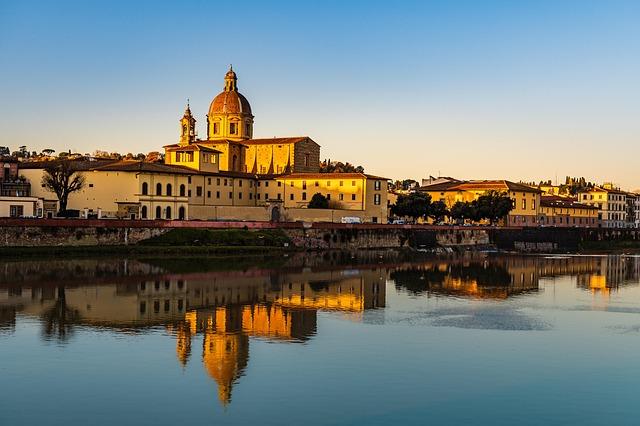Europe today is increasingly drawing comparisons to Renaissance Italy – a patchwork of competing city-states, fragmented political authority, and chronic internal rivalries. This analogy, highlighted in a recent Politico.eu analysis, underscores growing concerns about the continent’s cohesion and strategic direction amid rising geopolitical tensions. As national interests clash and unified decision-making falters, the shadow of Renaissance-era disunity serves as a cautionary tale for Europe’s future stability and influence on the global stage.
Fragmented Power and Rivals Threaten European Unity
Across the continent, a mosaic of national interests is undermining the cohesion that once defined Europe’s collective project. Instead of a unified bloc, the EU increasingly resembles a patchwork of competing power centers, reminiscent of the city-states that marked Renaissance Italy. Leaders prioritize domestic agendas over continental solidarity, fracturing consensus on critical issues such as economic policy, defense cooperation, and migration. This fragmented power dynamic encourages tactical alliances rather than broad, strategic partnerships, weakening Europe’s ability to present a united front on the global stage.
Key factors driving this disunity include:
- Resurgent nationalism fueling skepticism of supranational governance
- Economic disparities that foster divergent priorities among member states
- External geopolitical pressures magnifying internal divisions
| Country | Primary Rival | Flashpoint Issue |
|---|---|---|
| France | Germany | Fiscal Policy |
| Poland | European Commission | Judicial Reform |
| Hungary | EU Institutions | Rule of Law |
This internal rivalry risks stalling progress on common priorities, allowing external actors to exploit divisions and reshape Europe’s geopolitical landscape. Without effective mechanisms to harmonize these competing interests, the dream of a cohesive European Union risks fading into a historical relic.
Lessons from Renaissance Italy Reveal Risks of Division and Conflict
In Renaissance Italy, a patchwork of competing city-states like Florence, Venice, and Milan vied for economic power and political influence, often leading to internecine conflicts that fractured the peninsula. This fragmented landscape mirrors Europe’s current landscape, where nationalistic tendencies and regional rivalries challenge the cohesion of the European Union. The same centrifugal forces that once precipitated wars and political instability in Italy now threaten to undermine European unity through disputes over sovereignty, migration policies, and economic priorities.
Key parallels include:
- Decentralized power: Renaissance Italy’s lack of a unified authority fostered rivalries, just as Europe grapples with balancing supranational governance and national interests.
- Economic competition: Wealth disparities between regions fueled tensions then, as economic imbalances today strain EU solidarity.
- Shifting alliances: City-states constantly realigned their partnerships, much like European nations who oscillate between cooperation and confrontation in geopolitical affairs.
| Aspect | Renaissance Italy | Modern Europe |
|---|---|---|
| Political Structure | Fragmented city-states | Sovereign nations within EU |
| Conflict Drivers | Power rivalries and trade | Nationalism and policy disputes |
| Economic Disparities | Varied wealth of cities | North-South economic divide |
| Alliance Dynamics | Ever-changing coalitions | Shifting geopolitical partnerships |
Strengthening Institutions and Fostering Cooperation as Paths Forward
Europe’s current fragmentation echoes the disunity of Renaissance Italy, where competing city-states undermined collective strength. To reverse this trend, priority must be given to building robust institutions that transcend national interests. Stronger frameworks at the EU level can provide stability, enforce common policies, and ensure that individual member states align with broader European goals. Without this institutional reinforcement, cooperation remains superficial, and Europe’s global influence wanes amid growing geopolitical challenges.
Concrete steps forward include:
- Enhancing the decision-making powers of the European Parliament to reflect the will of EU citizens more directly.
- Establishing clearer mechanisms for conflict resolution among member states.
- Creating joint economic and security policies that bind countries through shared interests.
- Encouraging collaborative innovation in technology and climate initiatives to fuel mutual prosperity.
| Institution | Current Challenge | Proposed Reform |
|---|---|---|
| European Parliament | Limited legislative influence | Expand legislative authority |
| European Council | Consensus gridlock | Introduce qualified majority voting |
| European Commission | Enforcement inconsistencies | Strengthen compliance oversight |
Key Takeaways
As Europe grapples with the complexities of the 21st century, the striking parallels to Renaissance Italy serve as a cautionary tale rather than a hopeful mirror. Fragmented politics, regional rivalries, and competing interests threaten to undermine the unity and progress the continent has long strived for. Without a concerted effort to address these divisions and strengthen cooperation, Europe risks slipping into a period of instability reminiscent of its turbulent past. The challenge ahead will be to learn from history, forging a path that balances diversity with solidarity to secure a more stable and prosperous future.




